Located in the Midwest, the Cornhusker State is the only triply landlocked state in the United States. Regarding geography, the state consists of the Great Plains and the Dissected Till Plains – the latter is made of rolling hills, while the former can be described as a treeless prairie.
Nebraska is rich in flora and fauna, mostly because the National Park Service protects more than ten areas within it. On top of that, three additional large areas (Oglala National Grassland, Nebraska National Forest, and Samuel R. McKelvie National Forest) are protected and managed by the National Forest Service.
Regarding climate, the Cornhusker State is divided into two major climatic zones – one features a humid continental climate, while the other a humid subtropical climate. Overall, temperatures are similar throughout the state – winters are cold, and summers are hot.
Given this information, let’s learn more about the state’s native plants!
What Is a Native Plant?
A plant is called native or indigenous when its presence within a region can be confirmed across thousands of years. Just like the indigenous people of the Americas, native plants have been there for a very long time, constantly adapting to a region’s climate, weather, and soil conditions.
A native plant has not only adapted to a certain ecosystem – better said, it has become a part of it, where it grows naturally!
10 Native Plants in Nebraska
1. Heath Aster
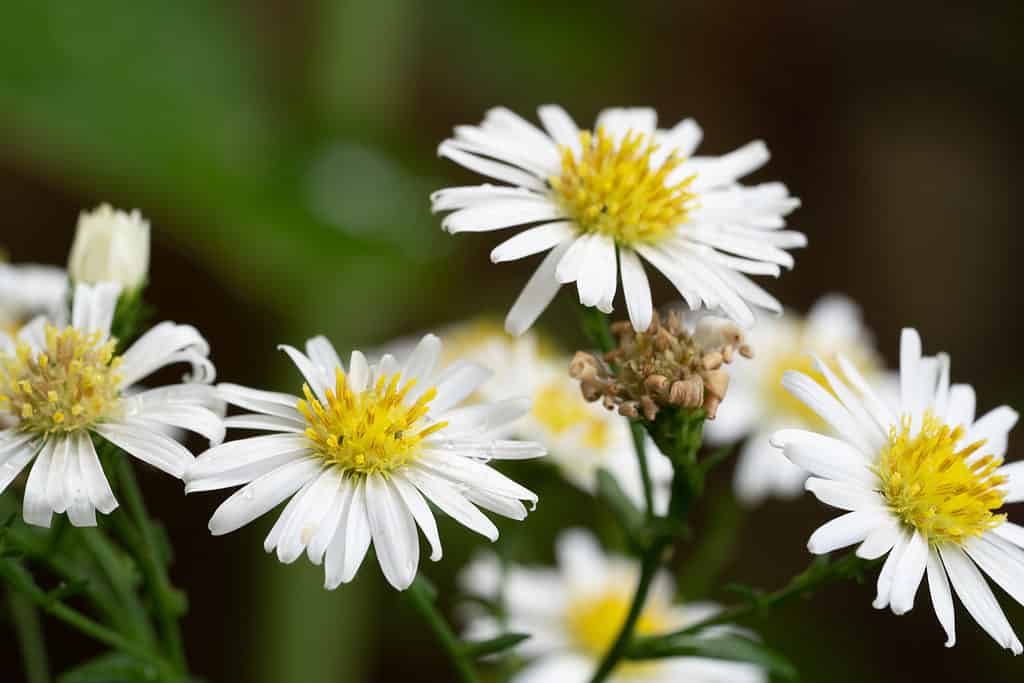
The heath aster plant is part of the daisy, sunflower, composite, and aster family (
Asteraceae).
©BaniHasyim/Shutterstock.com
| Heath Aster | |
|---|---|
| Scientific name | Symphyothricum ericoides (formerly known as Aster ericoides) |
| Type of plant | Perennial |
| Distribution | Eastern and central North America |
Also known as the frost and white heath aster, the heath aster plant is part of the daisy, sunflower, composite, and aster family (Asteraceae). It can be found throughout eastern and central North America – as a secure plant, you have a high chance of seeing it while exploring Nebraska.
The heath aster grows up to 1-3 feet (30-91 cm) tall and is characterized by many composite flowerheads that take hold of the plant, being more conspicuous than its leaves. Heath aster flowers are bright white, have yellow centers, and can be seen in late summer.
2. New Jersey Tea
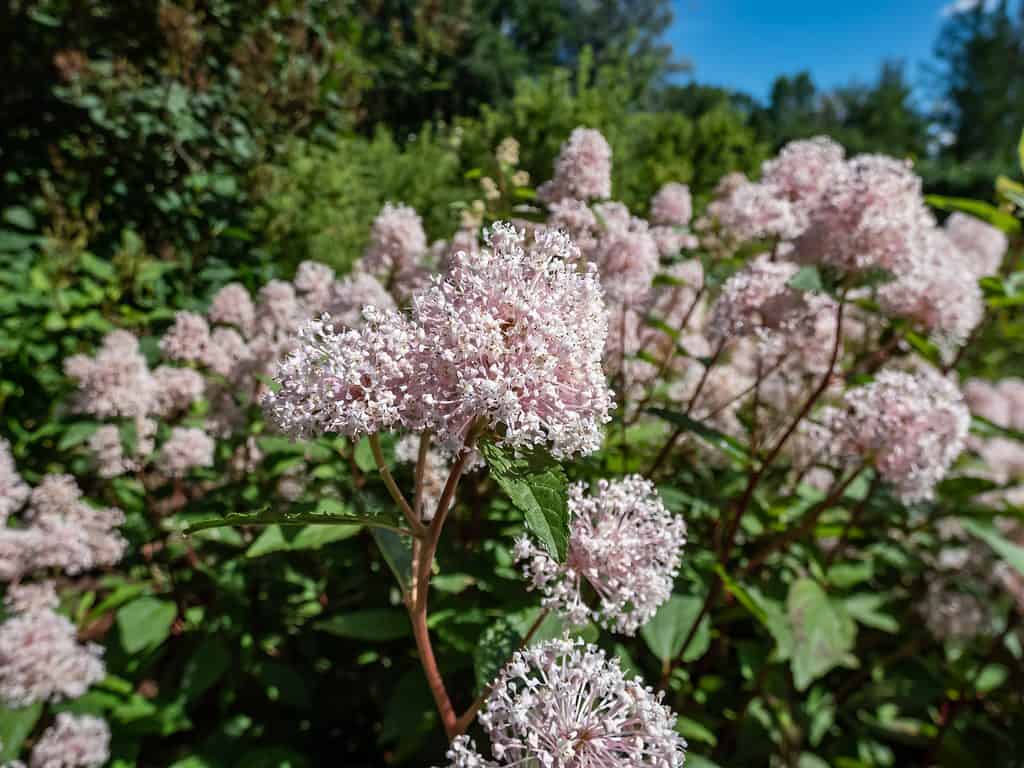
The New Jersey tea can also be called mountain sweet, wild snowball, red root, or Jersey tea ceanothus.
©Kristine Rad/Shutterstock.com
| New Jersey Tea | |
|---|---|
| Scientific name | Ceanothus americanus |
| Type of plant | Deciduous |
| Distribution | Canada (Quebec, Ontario), throughout the US, especially in the northern, central, and eastern states) |
The New Jersey tea can also be called mountain sweet, wild snowball, red root, or Jersey tea ceanothus. The plant’s naming stems from the fact that its leaves were used to replace imported tea, which was lacking during the American Revolution. It is part of the Rhamnaceae family, known as the buckthorn family.
This shrub usually grows up to 18-24 inches (0.5-1 m) tall and is characterized by many thin branches. Its flowers are white and grow in clumps on auxiliary peduncles. Since the plant can be easily spotted, you can come across the New Jersey tea while exploring prairies, dry plains, and rocky and sandy soils.
3. Illinois Bundleflower
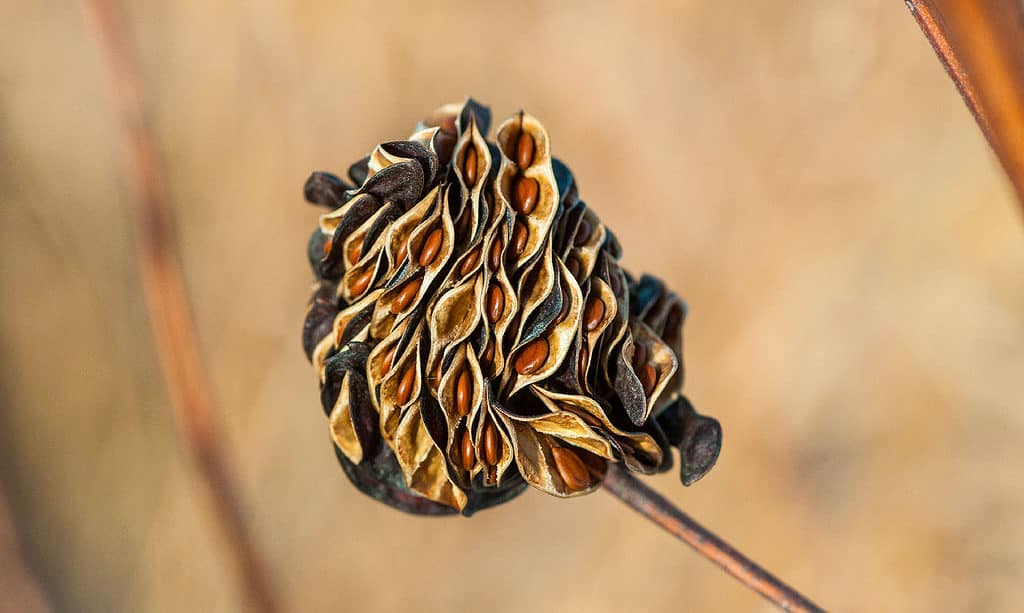
The Illinois bundleflower usually grows up to 1-3 feet (30-91 cm) tall.
©Nancy Bauer/Shutterstock.com
| Illinois Bundleflower | |
|---|---|
| Scientific name | Desmanthus illinoensis |
| Type of plant | Deciduous |
| Distribution | South-central and Midwestern United States |
Also known as prairie-mimosa and prickleweed, the Illinois bundleflower is a common plant, with little to no striking characteristics, at least in terms of aspect. It is native to the Midwestern and south-central United States and can be found in the most peculiar areas, including but not limited to roadsides. While not picky in terms of location, the plant requires full sun and significant moisture levels while growing.
The Illinois bundleflower usually grows up to 1-3 feet (30-91 cm) tall – rarely, the plant can get as tall as 5 feet (152 cm). Leaving the visual aspect aside, the plant is known for its high protein content. Its seeds consist of as much as 38% protein, being a valid competitor for another high-protein plant, namely soybeans.
4. Wild Bergamot
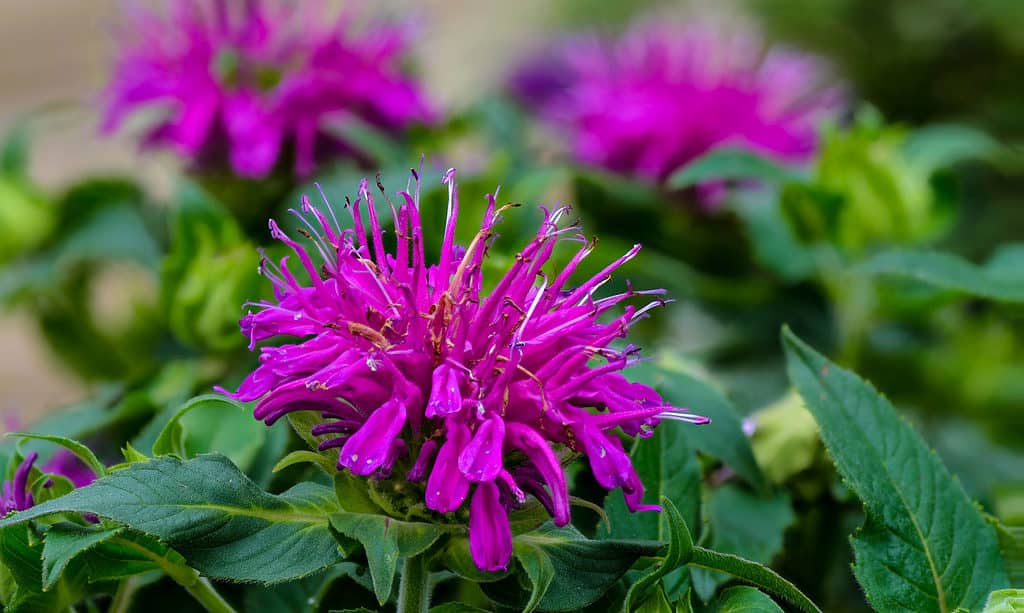
The wild bergamot plant is part of the
Lamiaceaefamily (known as the sage, mint, or deadnettle family).
©damann/Shutterstock.com
| Wild Bergamot | |
|---|---|
| Scientific name | Monarda fistulosa |
| Type of plant | Perennial |
| Distribution | Throughout North America, the Rocky Mountains |
The wild bergamot plant is part of the Lamiaceae family (known as the sage, mint, or deadnettle family). It is often referred to as bee balm and can be found throughout North America – you can easily identify it by its spiky flower head.
The wild bergamot usually grows up to 3 feet (0.91 m) tall and features leaves about 2-3 inches (5-7.6 cm) long. The leaves are toothed and shaped like a lance. Its flowers are gathered in compact clusters and stand alone at the end of each branch. Depending on growing conditions, each cluster is equipped with a minimum of 20 flowers or as many as 50.
5. Pink Smartweed
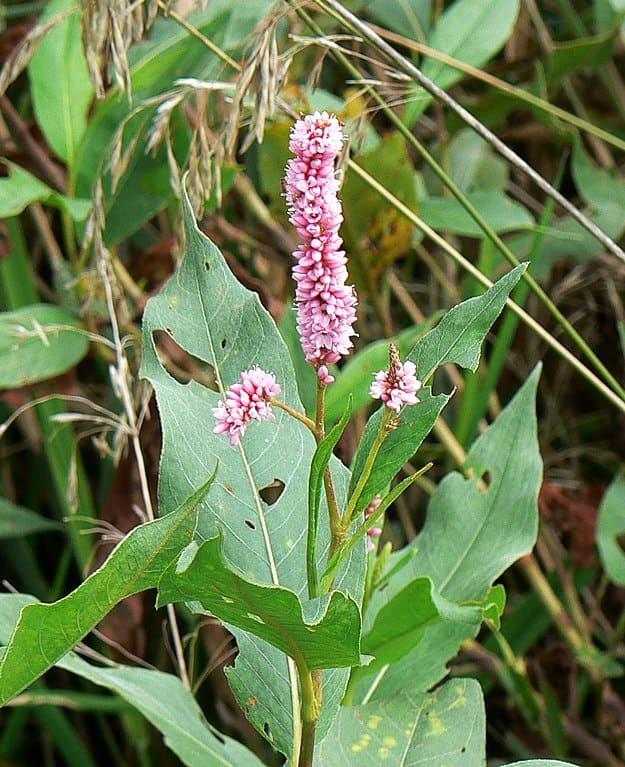
The pink smartweed is part of the
Polygonaceaefamily.
©MONGO / public domain – License
| Pink Smartweed | |
|---|---|
| Scientific name | Persicaria bicornis |
| Type of plant | Annual |
| Distribution | Central and southwestern United States |
The pink smartweed is part of the Polygonaceae family (also known as the smartweed or knotweed family). It can be found throughout the southwestern and central parts of the United States, from Texas to Arizona and all the way to Wyoming, South Dakota, and some parts of Nebraska.
The pink smartweed usually grows up to 5.9 feet (180 cm) tall and features 7-inch-long (18 cm) leaves. Its pink flowers have five tepals and gather in groups at the plant’s top. It grows from June to October and is usually found in peculiar, disturbed places – reservoir and pond shorelines and even moist ditches.
6. Climbing Wild Rose
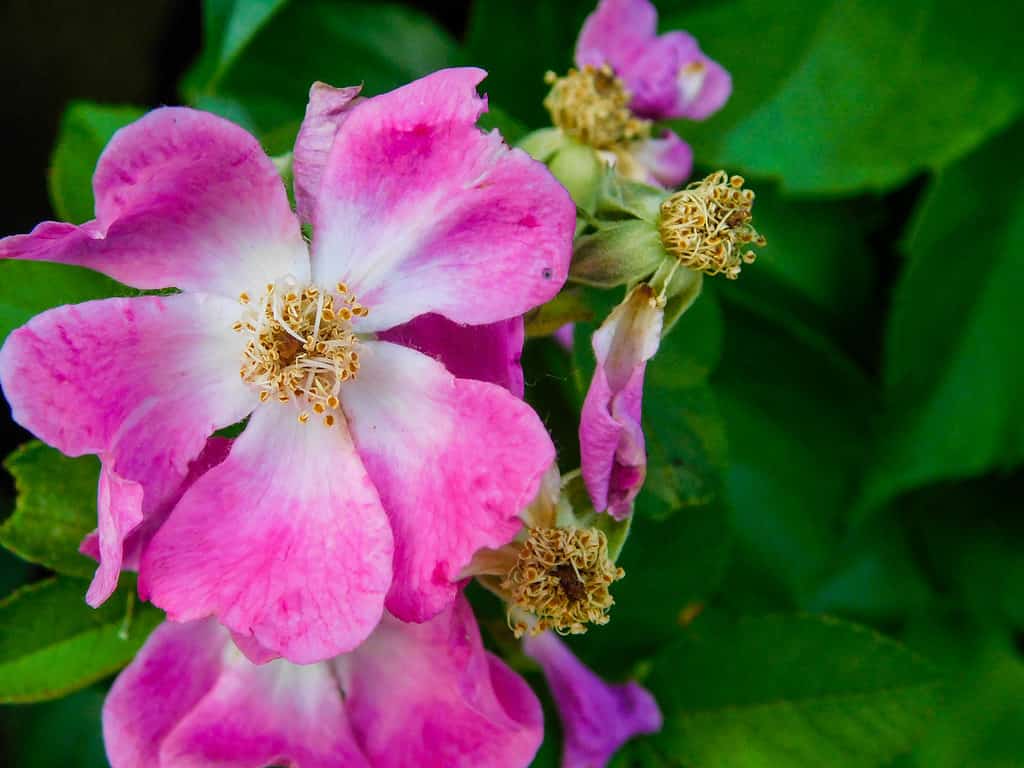
The climbing wild rose is a secure plant – you can easily enjoy its pale-pink flowers while exploring eastern and central North America.
©iStock.com/Wirestock
| Climbing Wild Rose | |
|---|---|
| Scientific name | Rosa setigera |
| Type of plant | Deciduous |
| Distribution | Central and eastern North America |
Also known as the climbing rose or prairie rose, this plant takes all the elements of its common names and becomes the climbing wild rose. It is part of the rose family and can grow as a vine or shrub. The climbing wild rose is a secure plant – you can easily enjoy its pale-pink flowers while exploring eastern and central North America.
As a vine/shrub, the plant is characterized by long-growing stems – up to 15 feet (5 m). When it doesn’t grow as a vine, it can be found in a sprawling thicket form (in this case, the plant will grow only as tall as 3 feet (1m), after which it will arch back down).
It is characterized by its pink (sometimes white) flowers that have a strong fragrance. While usually appearing single on the stem, they can be found in groups or panicles.
7. Pitcher Sage
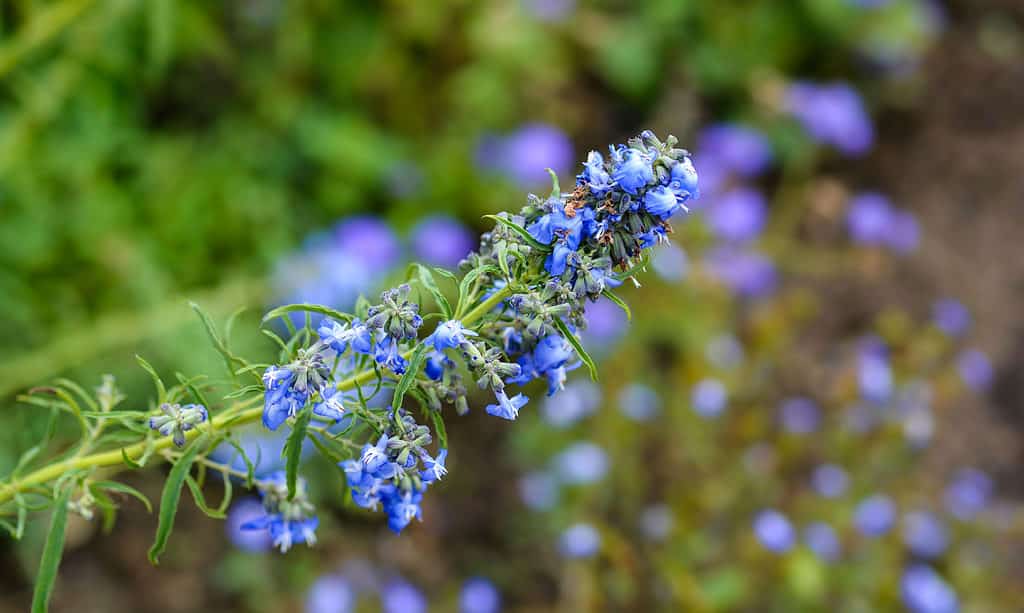
The pitcher sage features either smooth or furry leaves.
©iStock.com/Nahhan
| Pitcher Sage | |
|---|---|
| Scientific name | Salvia azurea var. grandiflora |
| Type of plant | Perennial |
| Distribution | Eastern and Central North America |
The Salvia azurea species is known as prairie sage, azure sage, or blue sage and has a total of three varieties – azurea, grandiflora (the pitcher sage), and grandiflora ‘Nekan.’ Regarding differences, grandiflora features larger flowers than the other varieties and is considered a better fit for gardens.
Native to eastern and central parts of North America, the pitcher sage usually grows up to 6 feet (1.8 m) tall and features either smooth or furry leaves. It is characterized by its blue flowers that can grow to about 0.25 – 0.5 inches (6.4-12.7 mm) long. These can be spotted from summer to autumn.
8. Greenthread
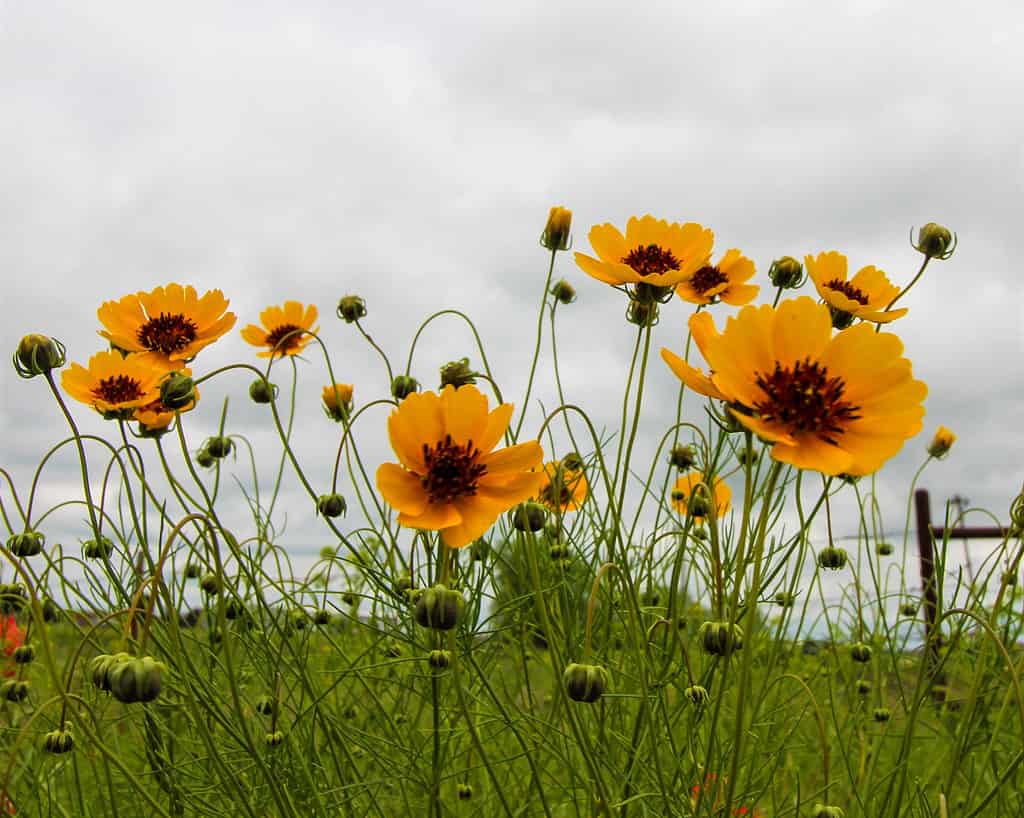
Greenthread features daisy-like yellow ray flowers equipped that can be spotted from afar.
©Charles Lemar Brown/Shutterstock.com
| Greenthread | |
|---|---|
| Scientific name | Thelesperma filifolium |
| Type of plant | Deciduous |
| Distribution | Wyoming, Nebraska, South Dakota, Montana, Arizona, Colorado, New Mexico |
Simply known as greenthread, this plant can often be referred to as plains greenthread due to its preferred growing locations, or stiff greenthread, probably because it is highly resistant to drought and remains stiff regardless of climate. It is part of the Asteraceae family of aster, daisy, composite, and sunflower plants.
The greenthread can grow up to 12-26 inches (30-66 cm) tall – it can be quite easy to miss. Luckily, it features daisy-like yellow ray flowers that can be spotted from afar. Its flowers can usually be seen from March to June. You can find the greenthread plant almost anywhere, including roadsides.
9. Rose Vervain
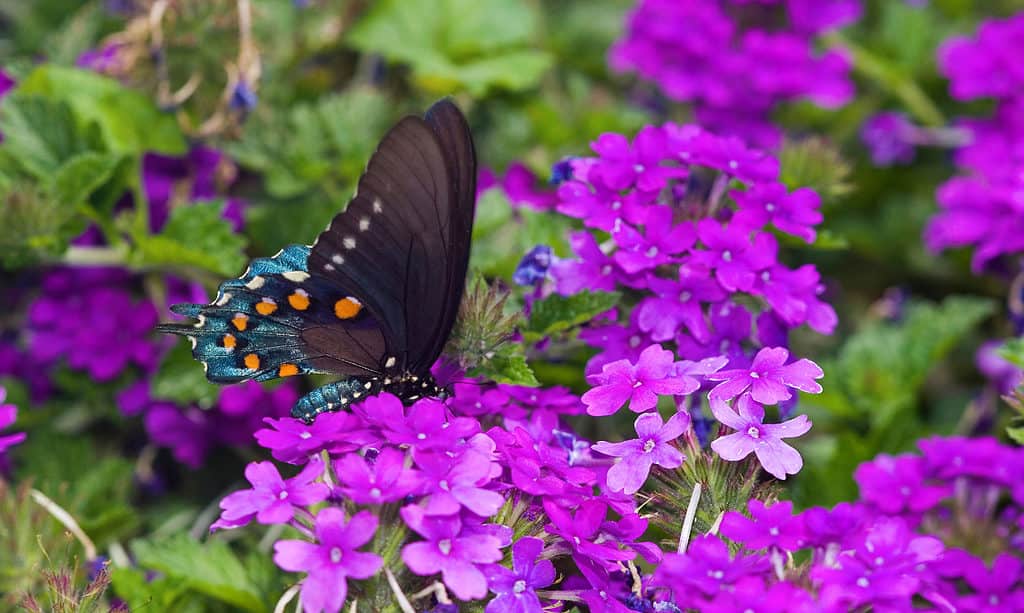
The rose vervain is part of the
Verbenaceaefamily.
©Danita Delimont/Shutterstock.com
| Rose Vervain | |
|---|---|
| Scientific name | Verbena canadensis |
| Type of plant | Perennial |
| Distribution | Eastern and South-Central United States |
Known as the rose verbena (or vervain), clump verbena, or rose mock vervain, the rose vervain is part of the Verbenaceae family and known for its flowers – usually appearing as clusters, spikes, heads, or small flowers that are often highly fragrant.
The plant is native to the south-central and eastern parts of the United States. However, thanks to its beauty, it has been cultivated throughout the country, even in the northeastern states.
The rose vervain is not tall, usually growing only up to 1 foot (30 cm). Luckily, its pink to purple flowers will certainly draw your attention. They are gathered in a tubular corolla and can be seen blooming in the spring, persisting until fall.
10. Small Soapweed
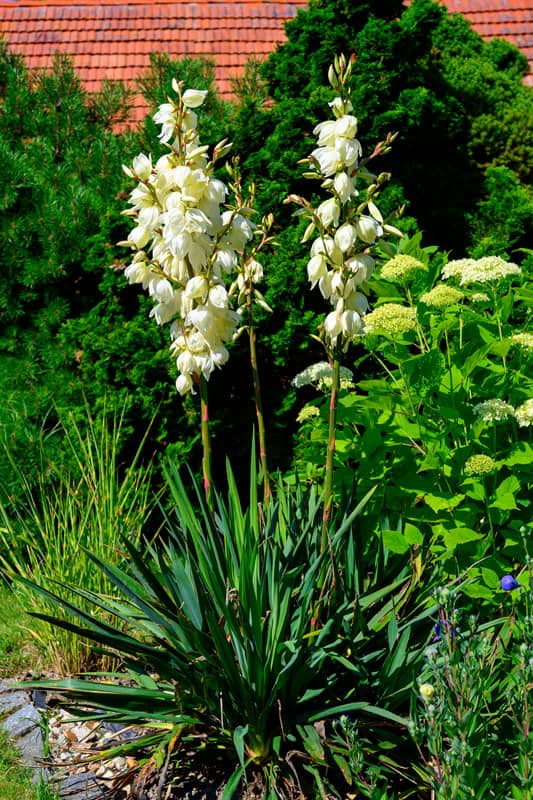
The small soapweed is often referred to as Great Plains yucca, Spanish bayonet, or soapweed yucca.
©Karel Zahradka/Shutterstock.com
| Small Soapweed | |
|---|---|
| Scientific name | Yucca glauca |
| Type of plant | Perennial |
| Distribution | Central North America |
The small soapweed is often referred to as Great Plains yucca, Spanish bayonet, or soapweed yucca. It is part of the Agavoideae family which contains plants growing in dry zones and deserts, such as the vuccas and the agaves. The small soapweed can be found in colonies of rosettes – it’s difficult to miss!
The plant exhibits varied measurements, mainly because its leaves stem from a rather small center. Leaves are usually about 24 inches (60 cm) long but very thin (0.5 inches (12 mm) across).
Up Next:
- Discover the Highest Point in Nebraska
- Discover the 9 Best National and State Parks in Nebraska
- Nebraska’s 6 Best Bird-Watching Spots This Summer
The photo featured at the top of this post is © James W. Thompson/Shutterstock.com
Thank you for reading! Have some feedback for us? Contact the AZ Animals editorial team.






